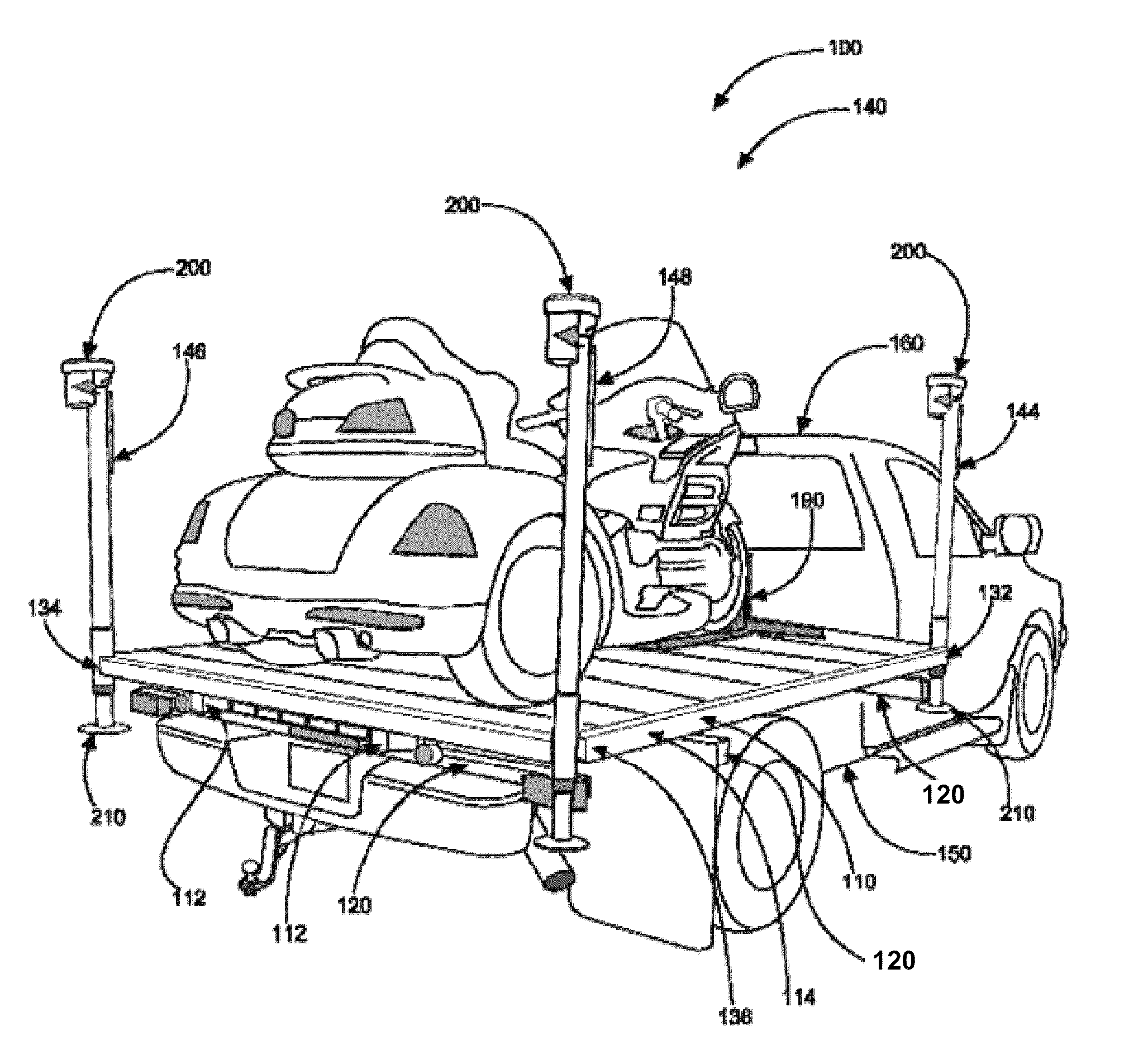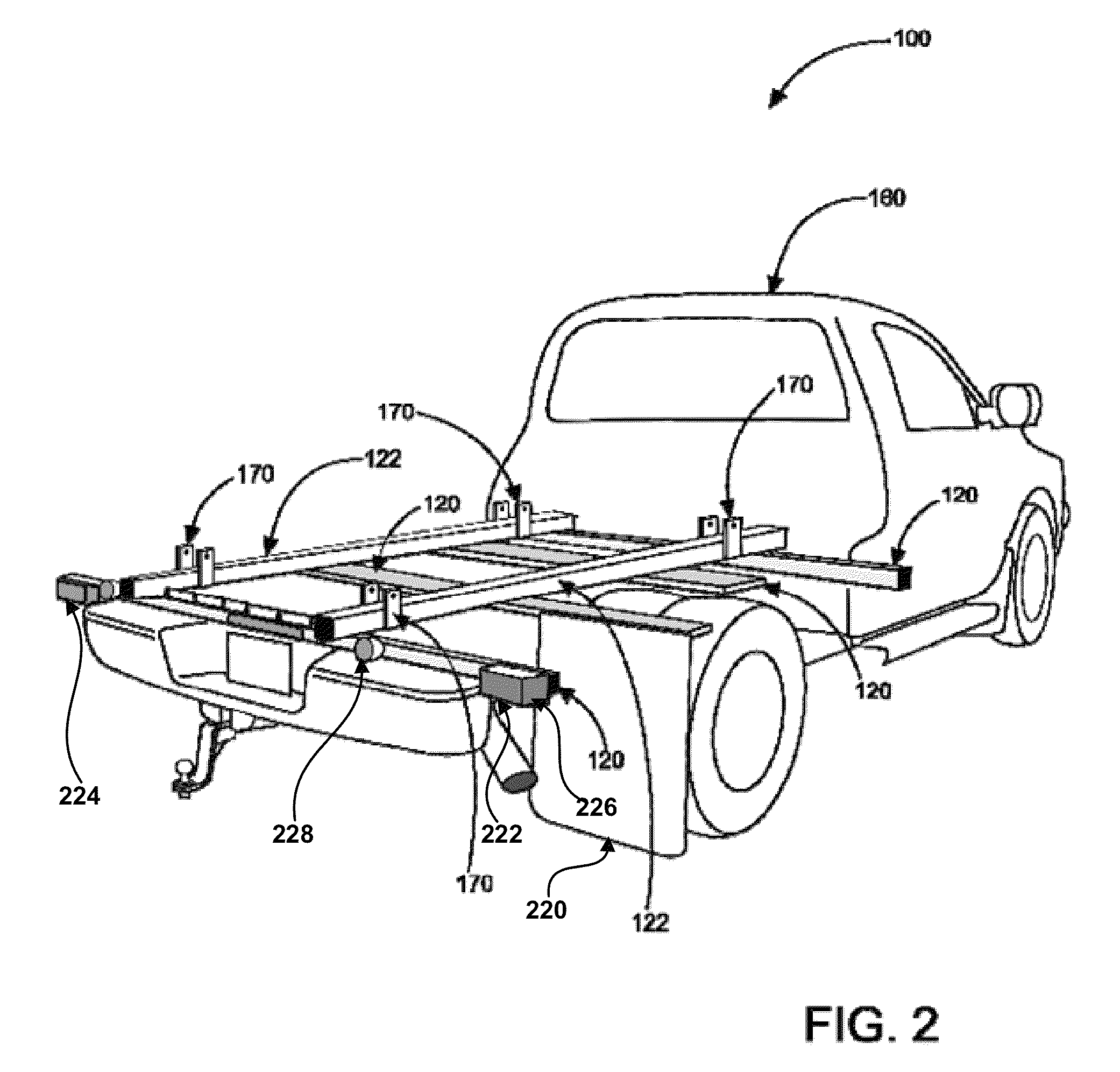Load-n-go platform lift systems
a platform lift and platform technology, applied in the field of cargo loading, can solve the problems of own set of hazards, less than ideal, and time-consuming for the trailer hookup process
- Summary
- Abstract
- Description
- Claims
- Application Information
AI Technical Summary
Benefits of technology
Problems solved by technology
Method used
Image
Examples
Embodiment Construction
[0029]As discussed above, embodiments of the present invention relate to a cargo loading device and more particularly to a cargo loading and hauling system as used to improve safety, speed of loading and unloading, and to reduce labor.
[0030]Referring to the drawings by numerals of reference there is shown in FIG. 1, shows a perspective view illustrating cargo platform system 100 according to an embodiment of the present invention. Cargo platform system 100 of the present invention comprises platform 110 that is self-contained, designed to allow one person to independently pick up and transport excessively heavy (or light) loads. Cargo platform system 100 is designed to allow individuals to pick up and transport loads effectively eliminating the need for long, heavy ramps or other equipment. Cargo platform system 100 may comprise: a sub-frame 120 having deck-rails 122; platform 110 (having platform rails 112; perimeter frame 114 having left front corner 130, right front corner 132, l...
PUM
 Login to View More
Login to View More Abstract
Description
Claims
Application Information
 Login to View More
Login to View More - R&D
- Intellectual Property
- Life Sciences
- Materials
- Tech Scout
- Unparalleled Data Quality
- Higher Quality Content
- 60% Fewer Hallucinations
Browse by: Latest US Patents, China's latest patents, Technical Efficacy Thesaurus, Application Domain, Technology Topic, Popular Technical Reports.
© 2025 PatSnap. All rights reserved.Legal|Privacy policy|Modern Slavery Act Transparency Statement|Sitemap|About US| Contact US: help@patsnap.com



